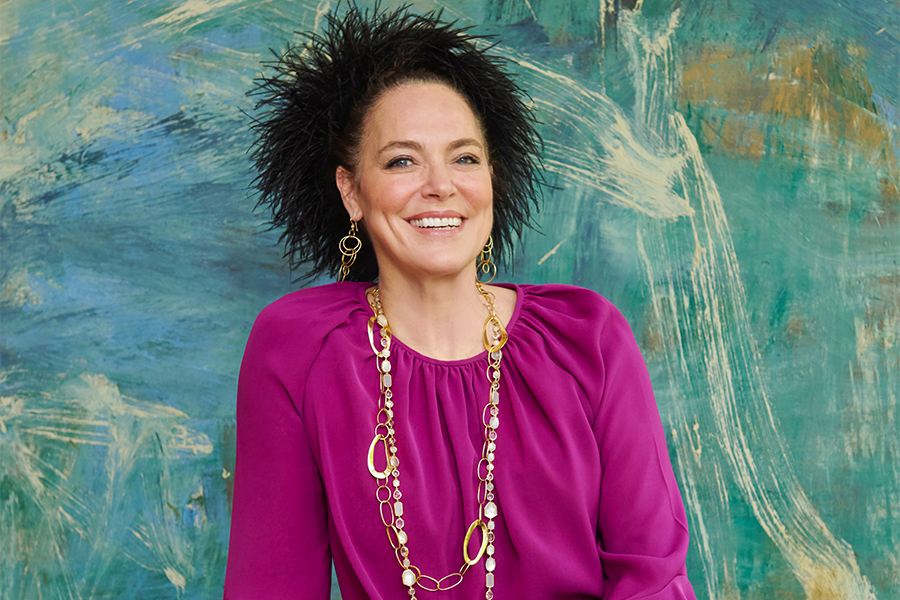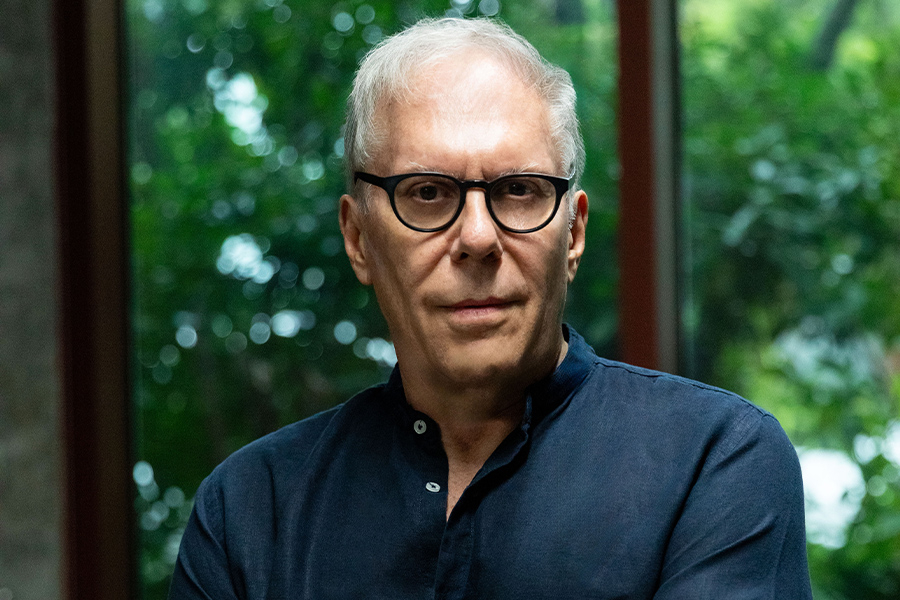Big windows flooded the interiors of Noella Nibakuze’s childhood home in Kigali, Rwanda with sunlight. She remembers those bright, sunny days spent in the living room or on the veranda of the house her parents designed and built themselves. Made from earth bricks and stone, the material palette was simple but “I loved it,” she says.
The youngest of seven, Nibakuze was a quiet and curious child who often joined her father—a contractor who also sculpted and built furniture—in his workshop after school. Her mother was an entrepreneur in her own right, leaving her teaching job to open a hardware store in the neighborhood.
Nibakuze assumed she would follow her father into the construction industry or pursue a career in civil engineering, which was a popular path in the country at the time as there was no school of architecture in Rwanda. “I didn’t know what architecture was,” she admits, “but being young, independent, and curious, I didn’t want to do what everyone else was doing. I wanted something different. That’s why I decided to study architecture even though I didn’t know what it was or what I was doing.”
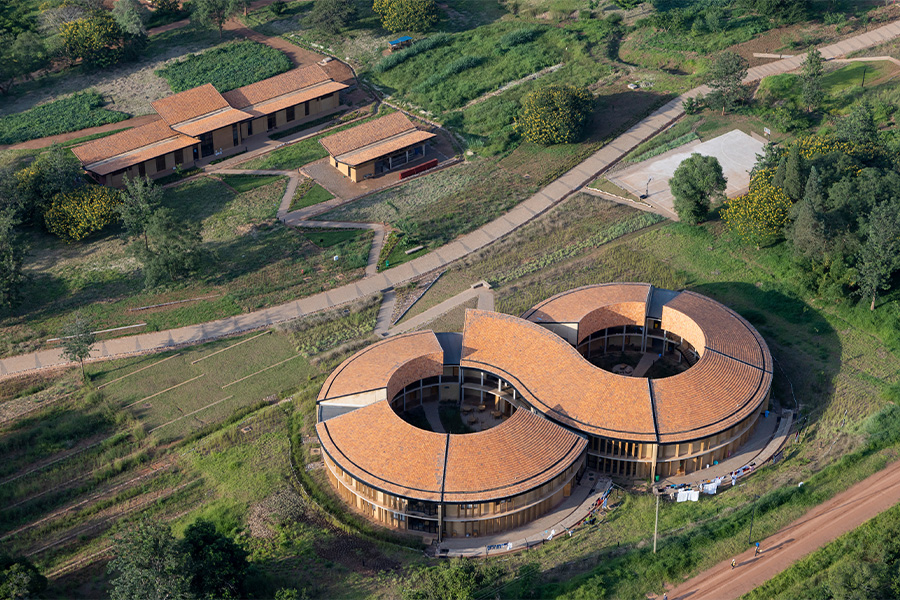
The figure eight-shaped Rwanda Institute for Conservation Agriculture (RICA)
While studying in South Africa, she began to dream big, envisioning herself crafting eye-catching skyscrapers in her hometown. Initially, she was drawn to the practical part of putting a building together, but “what really attracted me to the field was realizing that architecture can solve people’s problems,” she points out. “I could see how it could make life better for people, especially back home.”
When she returned to Rwanda in 2012—becoming only the 48th registered architect in the country—she brought a clear mission: to educate people about the profession and to celebrate Rwanda’s design vernacular. In school, she had learned mostly about Western design ideas, but “I couldn’t relate,” she says. Feeling disheartened, she began researching Vernacular South African houses—traditional round, single-room structures made from wattle-and-daub in rural Black South African neighborhoods—which revealed to her how indigenous building language could inspire modern architecture rooted in a local identity.
For one, she rejected the trend of importing large glass buildings from abroad for something more of its place. “I realized I could do something that is from my culture and heritage that is also beautiful and elevated,” she says.
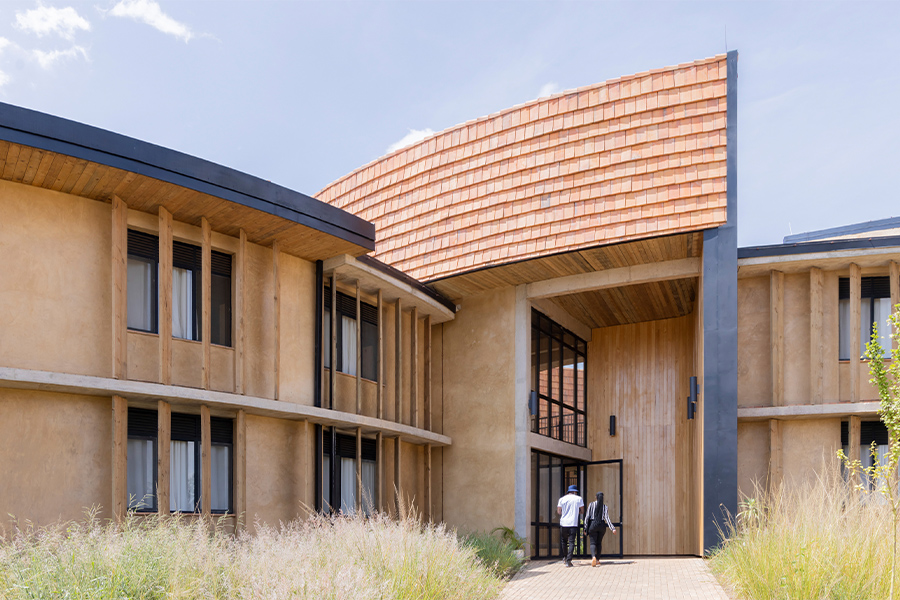
Locally crafted terracotta roof tiles, fired using coffee bean husks, exemplify RICA’s context-driven design
Nibakuze joined MASS Design Group as a junior architect in 2017 and by 2022 had risen to design director, a role where she continues to put her philosophy into practice. Consider her work on the Rwanda Institute for Conservation Agriculture (RICA), a first-of-its-kind campus funded by the Howard G. Buffett Foundation that integrates ecological, animal, and human health in its curriculum. The project prioritized both the community (95 percent of the 1,700-person labor force was hired locally) and sourcing local materials, including stabilized earth block, timber roof structures, and rammed earth to create climate-responsible spaces. Most importantly, the project influenced national policy, helping reinstate earth blocks through best-practice guidelines co-created with the government. RICA showed “what’s possible [in Rwanda] on a bigger scale,” she says.
Healing and justice remain central to her work, which means engaging the community, advocating for architectural education and mentorship, and designing projects that reflect Rwanda’s evolving identity. “The profession is very young in itself,” she says. “We’re supporting architects to think differently about how to make [Africa] better. There’s so much work to be done, and I’m excited to see how it will unfold.”
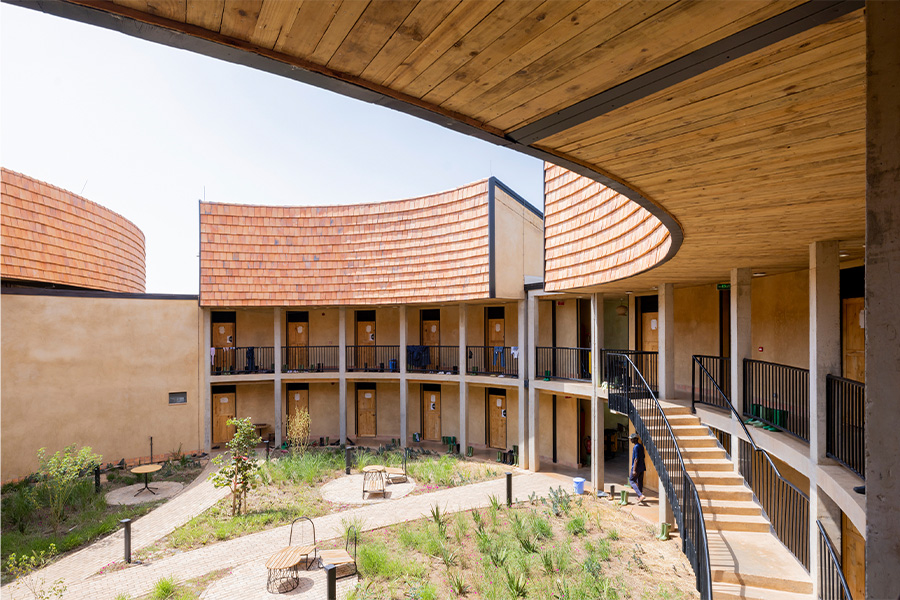
Low-embodied local materials comprise RICA’s building, including timber roof structures and stabilized earth block
This article originally appeared in HD’s September 2025 issue.

